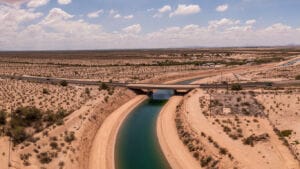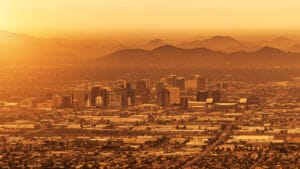Since its inception in 2001, The Southwest Energy Efficiency Project, or SWEEP as it is more commonly known, has tried to find new and innovative ways that will advance energy efficiency in the states of Arizona, Colorado, Nevada, New Mexico, Utah and Wyoming. Covering such topics as buildings and transportation efficiency programs, SWEEP mainly focuses on electric utility programs and the impact they can have on each state if they were to be adopted.
Recently, founder and executive director of SWEEP, Howard Geller, spoke to a group of industry professionals about the new study conducted by the company that analyzes “best practice” utility energy efficiency programs and their benefits not only for the Southwest, but more specifically how they benefit the state of Arizona.
In the new study, SWEEP introduces 18 new programs for residential, commercial and industrial customers based on “best practice” programs that are offered by leading utilities and other companies and each were selected to demonstrate maximized cost-effective energy savings by 2020. Some programs that Geller believes should be implemented are to provide affordable weatherization services to homes, allow buildings and homes to receive retrofitting services, provide education and incentives to both homes and companies for using energy-efficient lighting, to implement a program for refrigerator and freezer recycling and provide incentives for both homes and companies to install proper cooling and heating units. According to the study, investing in high-energy efficiency programs like the ones listed above will allow commercial and industrial companies to see an average cost of saved energy of 2.2 cents per kilowatt hours (kWH) and residential units to see an average cost of saved energy of 3.6 kWh.
With the implementation of these programs, in addition to the other programs included in the study, SWEEP believes that by the year 2020 the state of Arizona can see a net economic benefit of $7.3 billion. With these allocated resources, Arizona would have the opportunity to invest in more energy efficiency programs, resulting in the creation of 10,400 new jobs. In addition to the economic impact, the state of Arizona would see a large decrease in air pollutant emissions. Carbon dioxide emissions, which result from cars and power plants, would be reduced by 9.6 million metric tons per year by 2020. This is the equivalent to taking approximately 1.9 million passenger vehicles off the roads in Arizona. Other toxic gases such as nitrous oxide and sodium dioxide would have less of a presence in the atmosphere, resulting in fewer cases of chronic bronchitis and asthma, as well as fewer hospital admissions for respiratory and cardiovascular diseases throughout the Valley.
However, just like how the old saying “you gotta spend money to make money” goes, the cost of obtaining these benefits costs a pretty penny. Gellar suggests that Arizona, and the Southwest region as a whole, can one day see these amazing benefits if they are willing to invest $17 billion collectively. Despite this, SWEEP is confident that by the year 2020, the Southwest region could see up to $37 billion in utility and public health benefits, meaning that the region would see a net economic benefit of $20 billion. Gellar stated that the only way Arizona and the Southwest are going to see this “$20 billion dollar bonanza” would be to adopt energy savings goals, decouple utility fixed costs and electricity sales, reward performance of adopting the programs, maximize participation by increased funding for all programs and allow all utilities to be involved.
Arizona is currently in the lead in the Southwest region toward adopting more sustainable and energy efficient programs.
For more information on the study conducted by the Southwest Energy Efficient Project or to read the full report, visit http://www.20billionbonanza.com.



